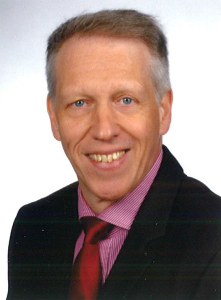KANBrief 3/15

Since June 2014, Dr Dirk Watermann has headed the Secretariat of the Commission for OSH and Standardization (KAN) in Sankt Augustin. Watermann, a construction engineer by training, had previously held a number of different positions at the BG BAU (German Social Accident Insurance Institution for the building trade), and was also the convenor of an international standards committee. In this interview, we ask him about the tasks and key issues that KAN is currently facing.
Dr Watermann, how has your first year been as head of the KAN Secretariat?
It has been interesting, exciting and challenging – despite the subject of standardization generally being considered boring. We are witnessing phenomenal change at the moment, entrenched structures are being broken up, and new fields of action are arising with different challenges and new partners. Thanks to the excellent support of the KAN Executive Board, the members of KAN, and in particular my new colleagues, we were able to launch, implement and achieve a great deal in this past year.
Could you give us some examples?
Certainly. Among the topics were the escalation in the standardization of services, qualification requirements and management systems, the new policy paper on standardization in the area of the safety and health of workers at work, and analysis of the possible impacts of free-trade agreements. We have faced the challenges presented by these topics, and in conjunction with partner institutions at national and international level we have represented the position of occupational safety and health through position papers, joint comments, webinars and informational events. We are currently conducting studies into implementing the UN Convention on the Rights of Persons with Disabilities in standards and into progress in the standardization of nanotechnology.
What significance do free-trade agreements have for KAN?
Political discussion of the TTIP in particular is currently in full spate. KAN's focus lies more upon the technical details, particularly the mutual recognition of the bodies of standards and the agreement's impact upon occupational safety and health. With reference to examples in the area of PPE and safety marking, we have drawn attention to the risks presented to occupational safety and health in Germany and the EU by ill-considered mutual recognition.
What do you envisage the focus of KAN's work to be in the coming years?
The focus of our work will continue to lie upon the standardization of safe and ergonomic products. At the same time, the highly dynamic new areas of standardization will require all stakeholders to adopt a different approach.
Growing digitalization will also result in changes to the world of standardization and to standardization cycles. Buzzwords such as Industry 4.0, ambient intelligence, collaborative robots and semi-autonomous and highly autonomous systems are just some examples. We must accept that we can no longer afford to wait three to five years for a standard in the areas of high-tech and ICT when product development cycles are much shorter than this. New models for standards development are already under consideration. At the same time, we must ensure that all stakeholders are adequately involved in the standards development process.
A further challenge in the future will be the increasing development of agreements resembling standards but outside the scope of traditional standardization activity, notably without consultation of all stakeholders, but nevertheless with considerable influence upon all groups in society.
At ISO level, we are also confronted with a growing number of standards with content relevant to the safety and health of workers at work. In these fields, too, we are in constant contact with the national and European OSH lobbies in order to formulate joint positions and to defend them at national and international level.
Do we therefore need a "European KAN"?
A European KAN would certainly be an excellent platform by which to lend greater weight to the voice of occupational safety and health in standardization. However, it would not be compatible with the principle of national delegation in standardization. We are also increasingly seeing widely diverging views in Europe regarding the role of occupational safety and health in standardization. I therefore think that a more suitable strategy for developing synergies and lending greater weight to occupational safety and health is to manage our collective resources intelligently in standardization work at European level and to work with other OSH institutions on a case-by-case basis. On a practical level, the accompanying development of European networks such as EUROSHNET certainly has further potential and will acquire greater relevance owing to the changes in the sphere of standardization.